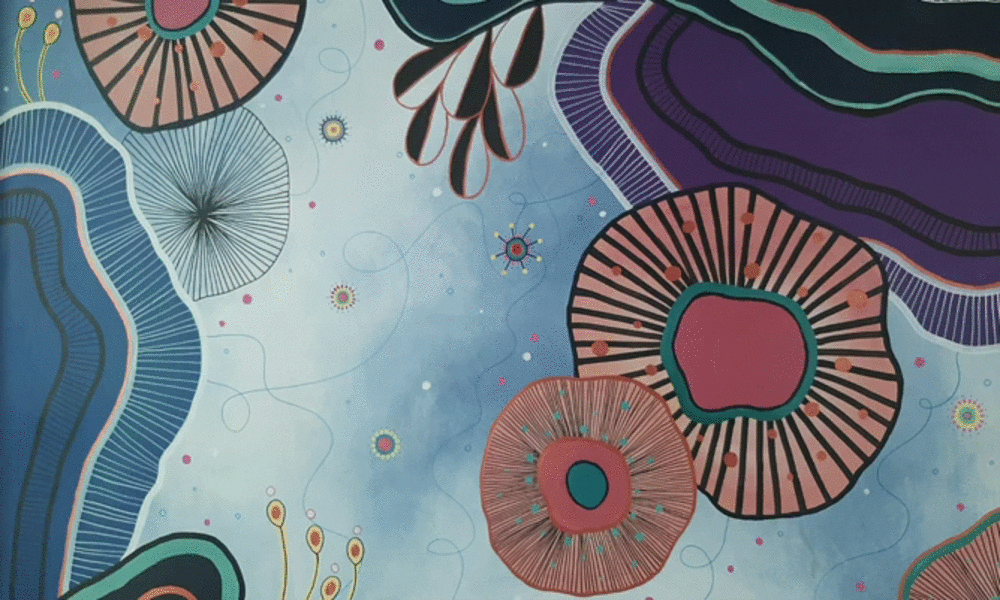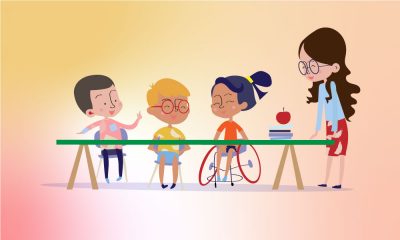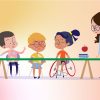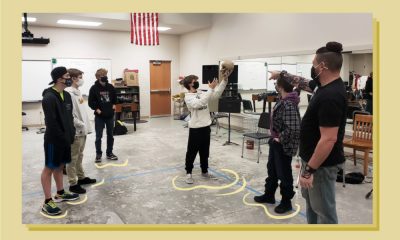Education
The Evolution of Art Education in Dubai
‘We get the students to think about what they want to represent in their piece.’
Laura, a year 13 student at Nord Anglia International School, Dubai, focused intently on a sketch, carefully applying paint and patiently working on her latest piece: a reflection on womanhood. Laura’s inclination towards art is strong and she can spend almost all day working on her projects. “I genuinely love [creating] art,” she said. “It’s the most relaxing part of my day.”
Art classes have evolved greatly: school sessions are far more holistic than they used to be. Students are encouraged to reflect, explore and study different styles of artists that attract their attention. It’s not simply about creating artwork, either. Educators have also started incorporating it into other lessons as a part of the STEAM movement that focuses on the integration of several disciplines including math, the sciences, technology, engineering, the arts and more. A huge benefit of assigning equal importance to the arts in education is their role in developing 21st-century skills. For instance, Leah Heiss, an Australian designer combines the arts and the sciences. She collaborates with engineers, nanotechnologists and other professionals to facilitate projects such as creating jewelry that helps diabetics regulate their insulin intake.


Teaching art also includes helping students analyze the work of popular maestros in the field. Photo courtesy: Sunmarke School
At Nord Anglia International School, students are encouraged to view art as a medium to express how they feel and discover their personal strengths and weaknesses. For Laura, that meant embracing something previously unexplored such as working with oil paints. “It’s important to go with the flow,” Laura reflected, talking about the process of creating a work of art from scratch. “[Having said that], a lot of thought goes into the process.”
Richard Marks, the school’s head of the design faculty, said that students are often encouraged to spend time analyzing the work of popular maestros in the field such as French artist Henry Matisse, British sculptor Peter Randall-Page and American artist Joseph Cornell, who was particularly known for his unique style that comprised of telling a story through objects meticulously arranged in wooden boxes. “We get the students to think about what they want to represent in their piece,” he said.
Also read: All Work and No Play? Why Schools Around the World Are Cutting Back on Homework
Laura wished to reflect on her Chinese roots and decided to explore her identity as someone who grew up away from her ancestral home. Her work was laid out in a scrapbook format and included snapshots from her passport, her visa page, a portrait of her as a child and letters from the Chinese alphabet. At another Dubai school, Sunmarke, students have started using contemporary fashion and textiles to express themselves artistically and are encouraged to dive into the technicalities. “We offer a range of projects, not just drawing…we [recently] looked at 3-D design and construction. That project has been very popular,” Catherine Williams, head of arts at the school, told Re:Set. “I think art makes people come up with more creative solutions to problems. [It makes them] think outside the box…a lot of it can be applied to different [jobs] such as retail and customer service.”


Art education can increasingly help students work on skills such as innovation, observation, and imagination. Photo courtesy: Sunmarke School
Art classes have often been hailed as an effective learning tool that allows students to think critically and implement what they pick up from the classes in other areas of their lives. “Creativity is hugely important in today’s society,” Marks said. He cited an example: being able to think creatively in high-salaried jobs is considered essential in many disciplines and is non-negotiable. Additionally, being creative can allow professionals to tackle contemporary challenges such as spreading awareness about topics like the climate crisis and gender equality through popular platforms such as social media.
“Students who received more arts education experiences are more interested in how other people feel and more likely to want to help people who are treated badly.”
According to a study published in 2019 that was led by American professors Brian Kisida and Daniel Bowen, art classes significantly help learners perform better academically, socially as well as emotionally. The authors wrote, “In terms of our measure of compassion for others, students who received more arts education experiences are more interested in how other people feel and more likely to want to help people who are treated badly.” Laura said that art has taught her to be more patient and work with her peers to overcome challenges such as time constraints and be more open to new ideas. “I do get frustrated [while working on new pieces of art] but manage to work through it,” she said. “It’s quite satisfying to see the results.”
While the benefits of art classes are being increasingly cited, they’re not assigned equal importance in comparison to other subjects such as science, languages, math or the social sciences. In the book, “Learning in a Visual Age,” penned by researchers and professors, Ellen Winner and Lois Hetland, the discrepancy between arts in education and other subjects was a crucial point of discussion. “In a short-sighted effort to help make children competitive in a global economy, many schools have reduced visual arts instruction in favor of a greater emphasis on mathematics and science,” the authors wrote, before explaining how the arts can increasingly help students achieve excellence in education and work on skills such as innovation, observation, and imagination, among others.


Going beyond simply creating artwork, art education encourages students to reflect, explore and study different styles of artists. Photo courtesy: Sunmarke School
Marks keeps his classes as free-flowing as possible in a bid to encourage and allow students of all abilities to feel that they’re in a safe space and express without the fear of judgment. Students can experiment with ideas, make mistakes, try out new methods while working on a project, ask questions or seek guidance if they feel stuck during conceptualization and execution. The classes are inclusive and students are provided accommodations such as extra time during art exams if required. They also have access to modern tools and specialist equipment including Macbooks and cameras. The students at Sunmarke School have access to similar tools and equipment. “As long as schools continue giving art curriculum time, students can thrive,” Marks reflected. Williams agreed. “I feel like there’s a point of every subject [in school]… it [art as a subject] encourages more outside-the-box thinking,” she said. “It makes people [find] more creative solutions to problems.”
Some of the latest works of art by students at Nord Anglia International School occupy a pride of place on the school’s walls. Pieces of work that took over 50 hours to make and were a part of their final projects. At Sunmarke, one of the student’s pieces took over a month to create. “The concept [and the execution are crucial],” Marks reflected. “The journey [of creating art] is almost as important [as the destination.]”

























